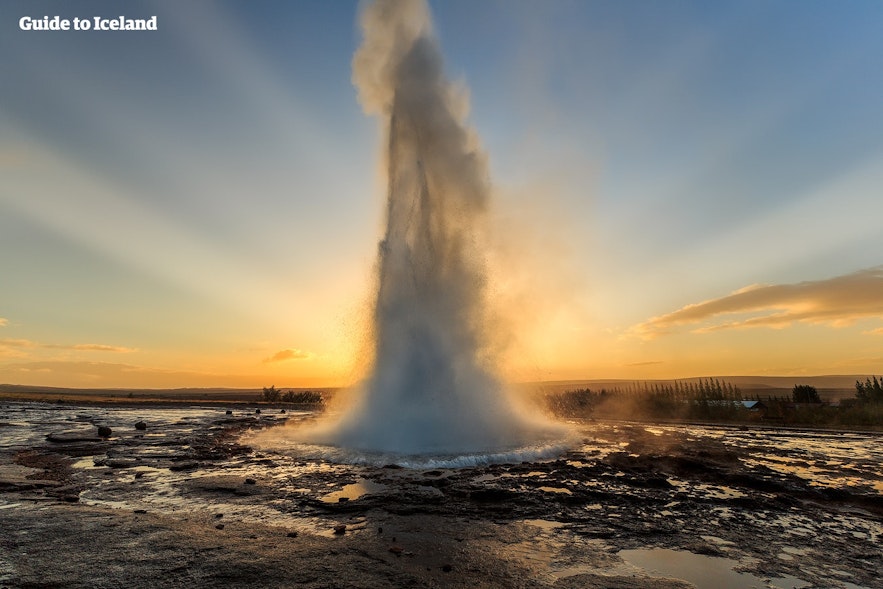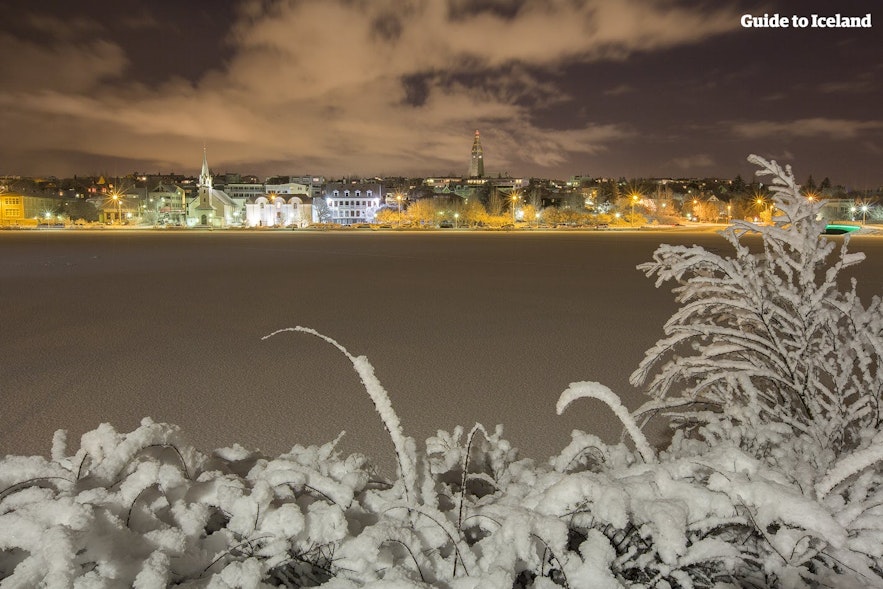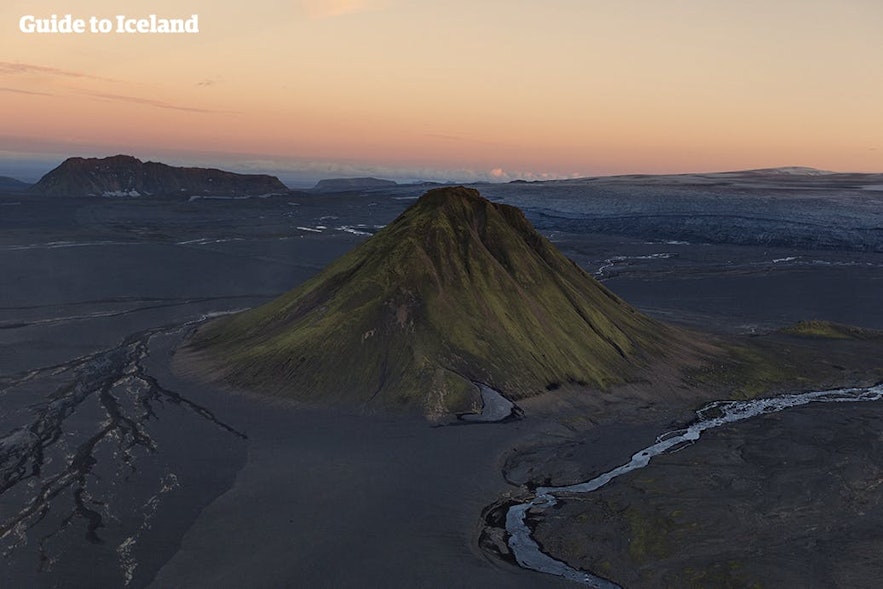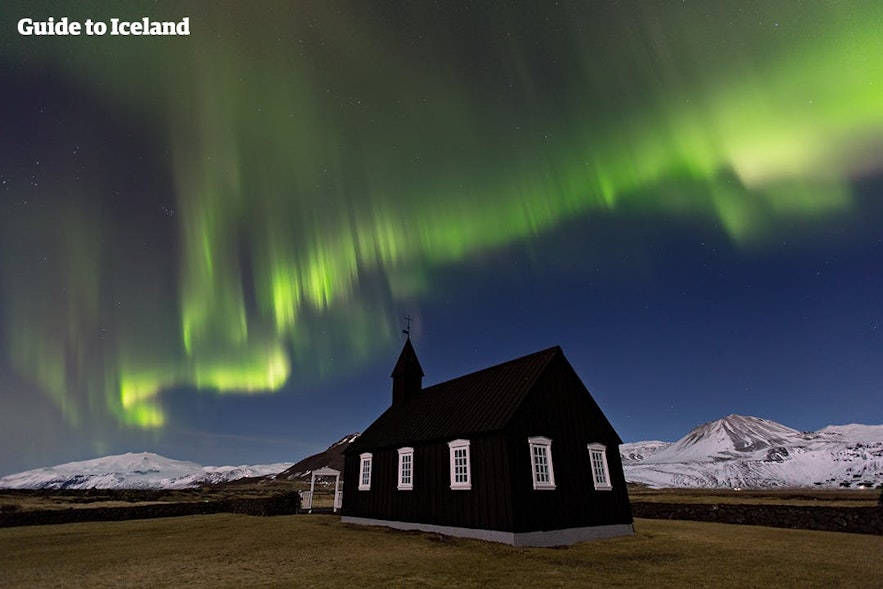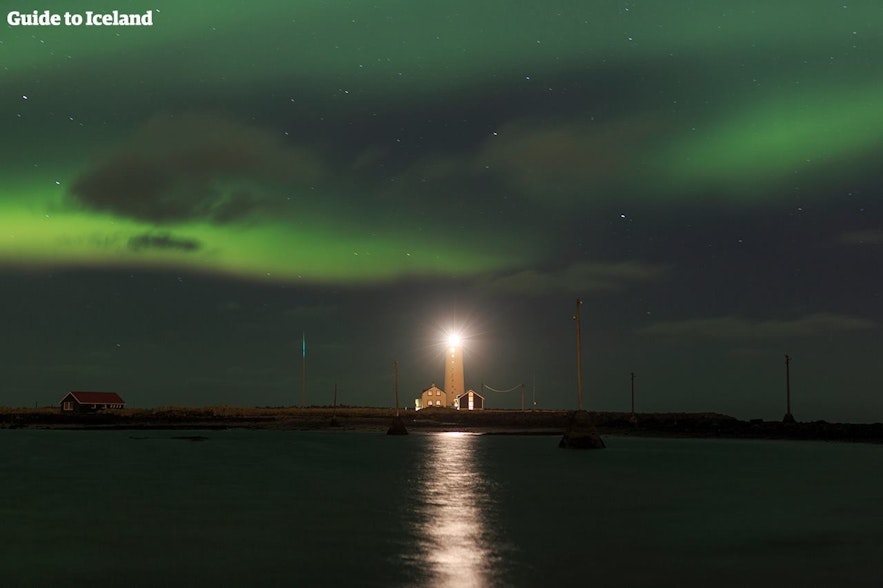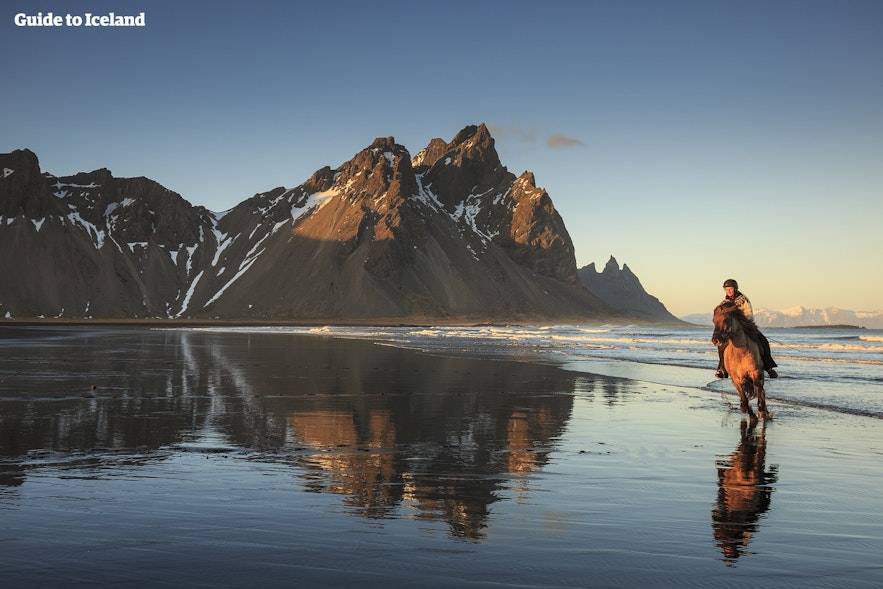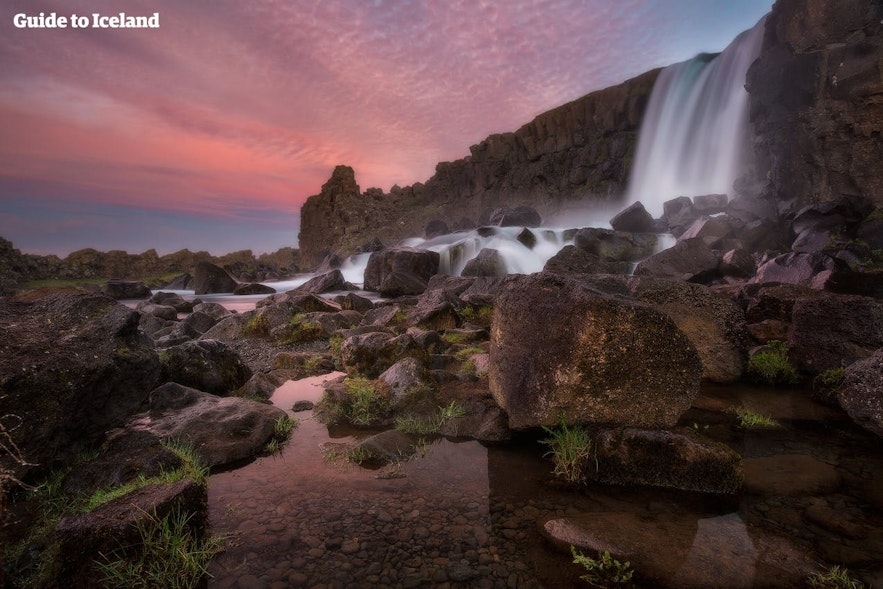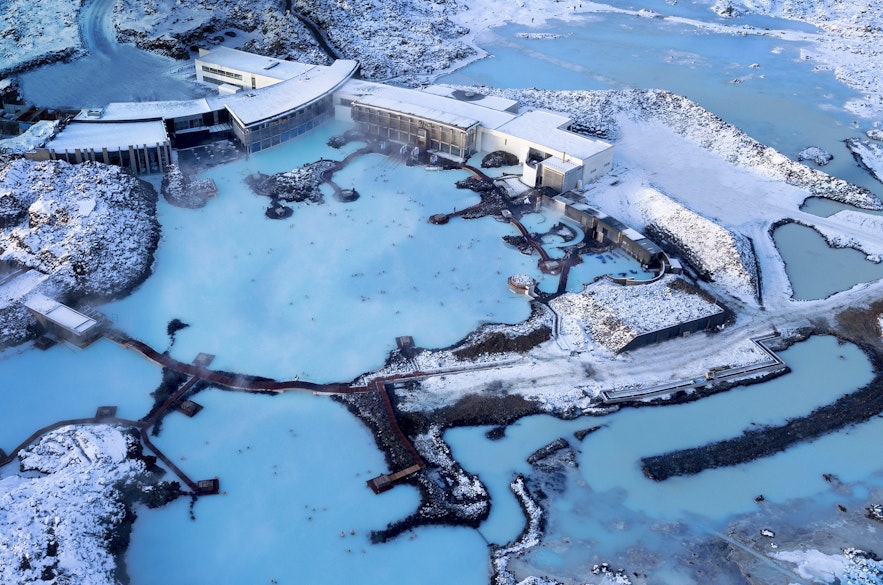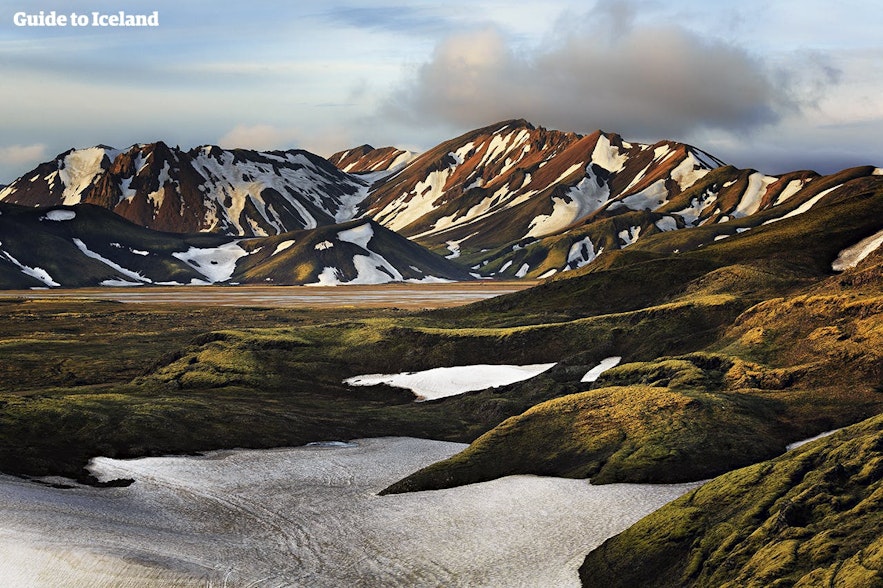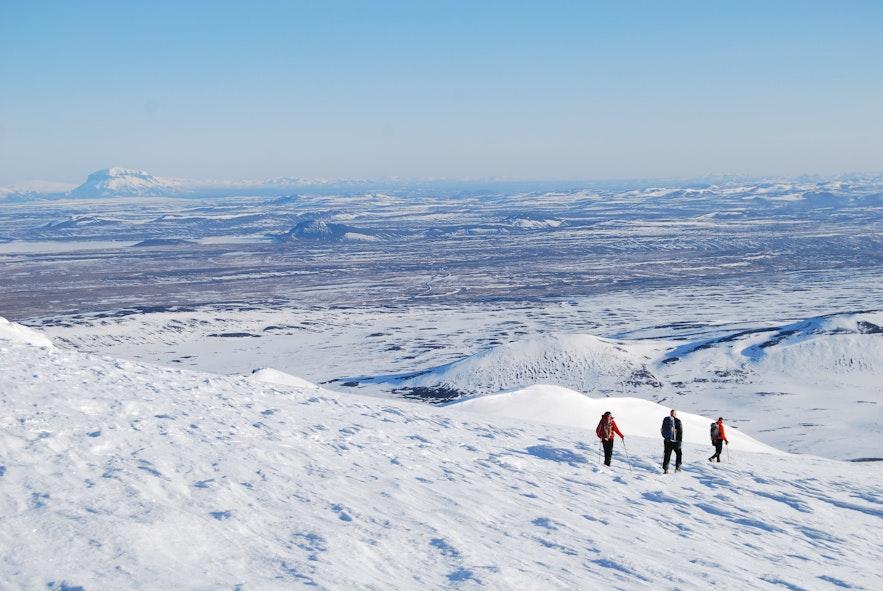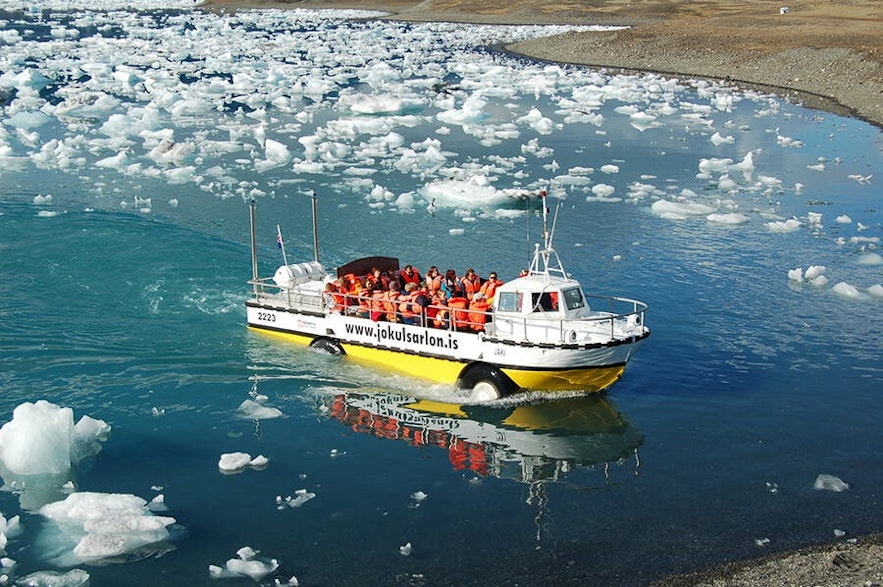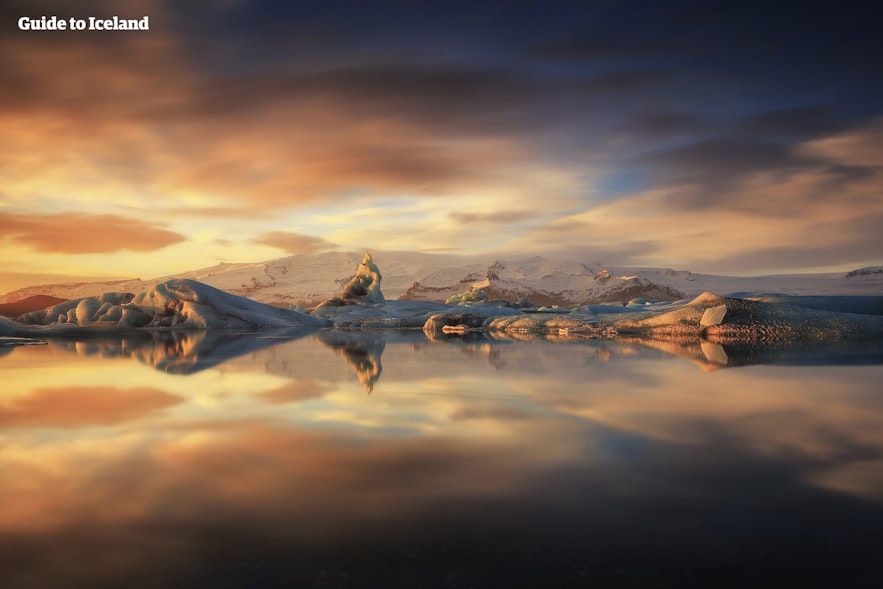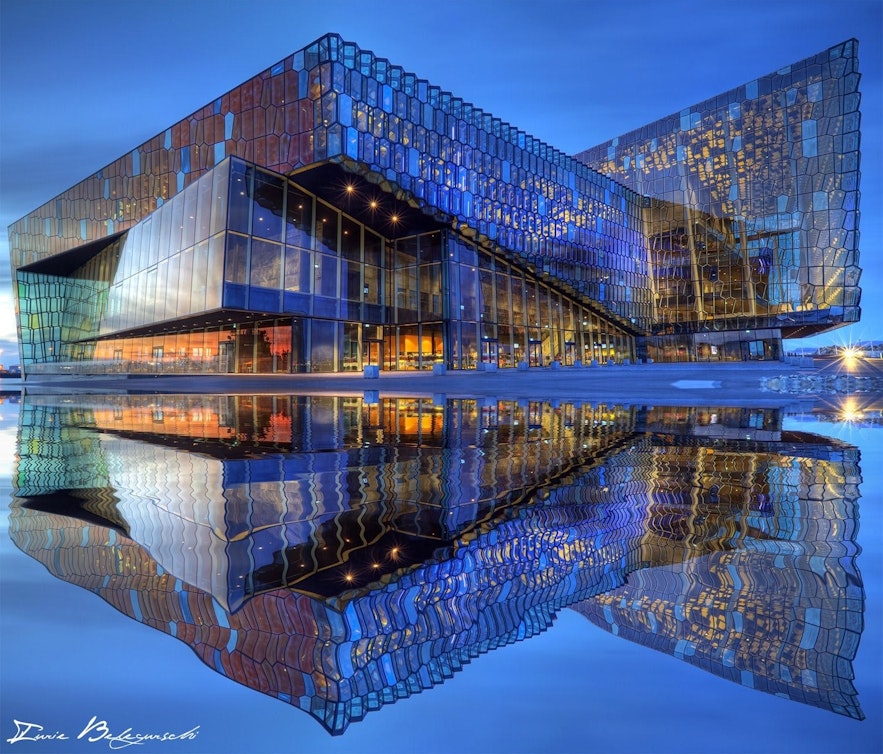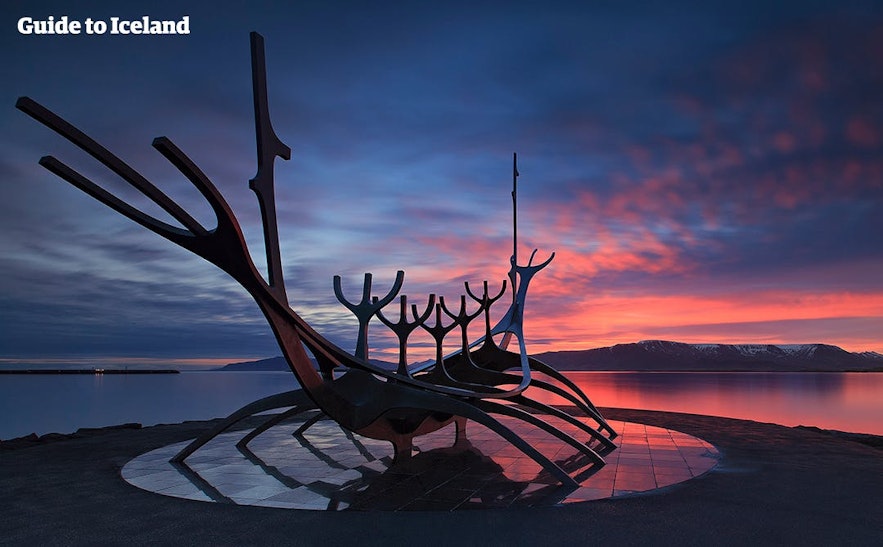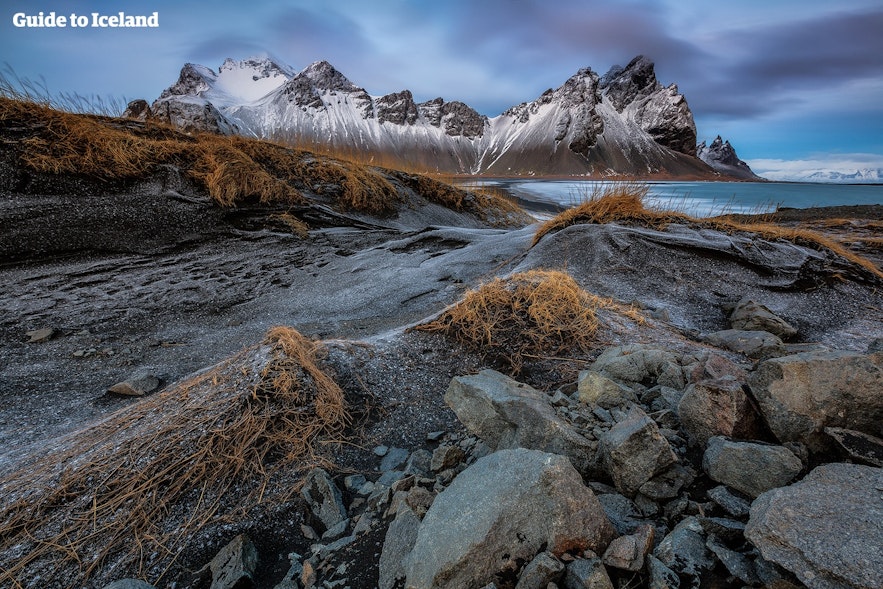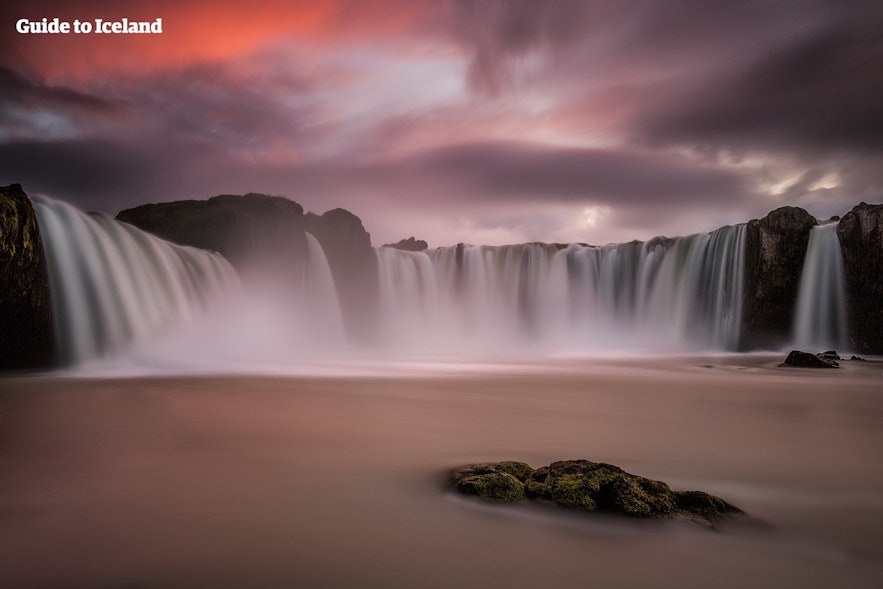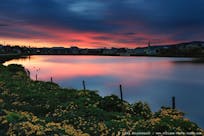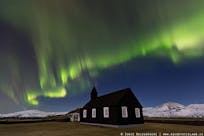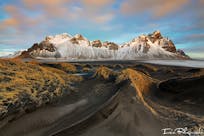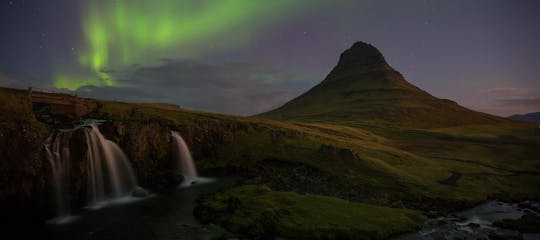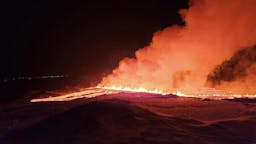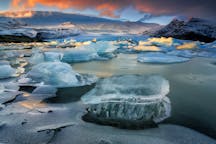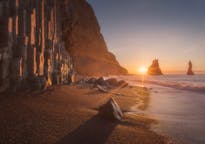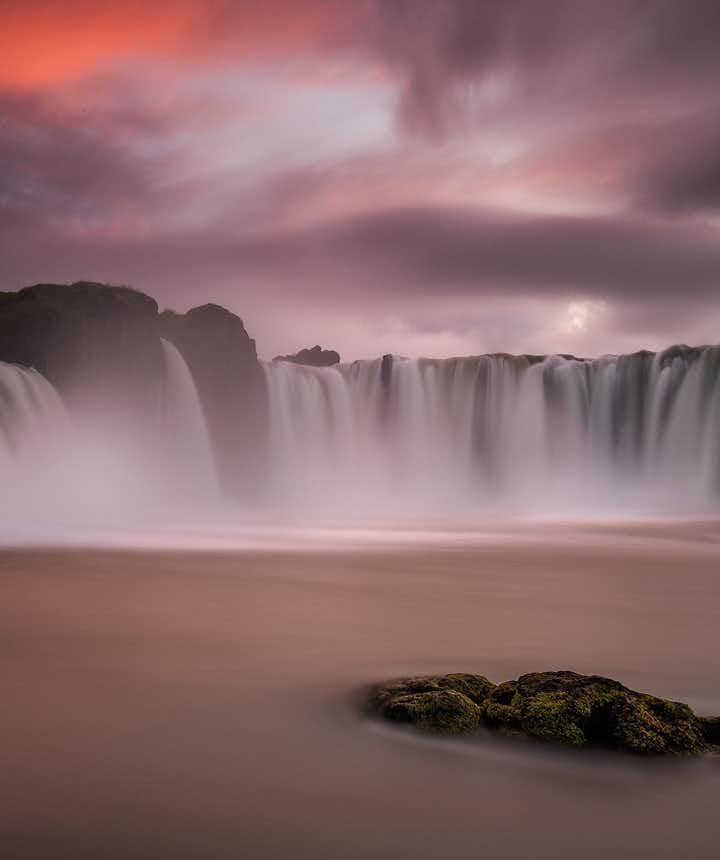
Visiting Iceland in October | Things To Do & Places To Visit
- October Weather in Iceland
- Hours of Daylight in Iceland in October
- What to Pack for Iceland in October
- Driving in Iceland in October
- Driving Iceland's Ring Road in October
- What To Do in Iceland in October
- The Northern Lights in Iceland in October
- Whale Watching in Iceland in October
- Glacier Tours in Iceland in October
- Horse Riding in Iceland in October
- Snorkeling and Diving in Iceland in October
- The Golden Circle
- Hot Springs and Swimming Pools
- Visiting the Blue Lagoon in October
- Day Hikes and Super Jeeps
- Jokulsarlon Glacier Lagoon Boat Trips
- Exploring Snaefellsnes
- Sightseeing in Reykjavik
- Other Sights and Destinations
- Events and Festivals in Iceland in October
- Halloween in Iceland
- The Reykjavik International Film Festival
- Imagine Peace Tower Lighting
- Suggested Itineraries for Iceland in October

Discover the very best things to do and places to see in Iceland in October. With everything you need to know about what the weather's like in the fall, how to get around, what to pack, and what tours you should embark on. This is the ultimate guide to visiting Iceland in October!
October is a fantastic time to visit Iceland. The rush of the summer months is over, but temperatures haven't quite yet reached the lows of the depths of winter. It's also the start of the aurora season, so we recommend renting an economy car and heading out of the city to catch the northern lights. You can find the perfect room on Iceland's largest marketplace for hotels and explore the variety of October tours that are available.
October is one of the quietest months for visiting Iceland. There are far fewer tourists at this time of year than there can be during the height of summer, for example.
This slowdown means that visitors can enjoy the best that the country has to offer without having to deal with hordes of people—and without paying exorbitant peak-season prices!
October days are long enough for you to fill with activities, while the nights are dark enough that you should have a good chance of seeing the northern lights. It truly is a great time to visit. If you're planning a trip to Iceland in October, you'll want to know all about the best things to do and places to go, as well as what to pack. Luckily, we're here to help.
But before we look at what to do and where to go, let's answer an important question: What's the weather like in Iceland in October?
- Plan your trip with the Ultimate Guide to Iceland in Fall
- See also: The Ultimate Guide to Iceland in Winter
- See also: Iceland's Seasonal Contrasts
- Read about Iceland in September and Iceland in November
October Weather in Iceland
Iceland's weather varies from season to season, month to month, and day to day. It can be raining one minute, sunny the next, and hailing or snowing just a few minutes later.
The weather in October in Iceland is also erratic. Temperatures in Reykjavik during October have been known to range from 19°F (-7.2°C) to 59°F (15°C). If there's one thing you can predict about Iceland's weather in October, it's that it's highly unpredictable.
On average, however, the temperature in Reykjavik in October is around 41°F (4.8°C). This is slightly below the average yearly temperature of 42°F (5.4°C). Outside of Reykjavik, temperatures can be even colder, particularly in remote areas like the Highlands or the Westfjords.
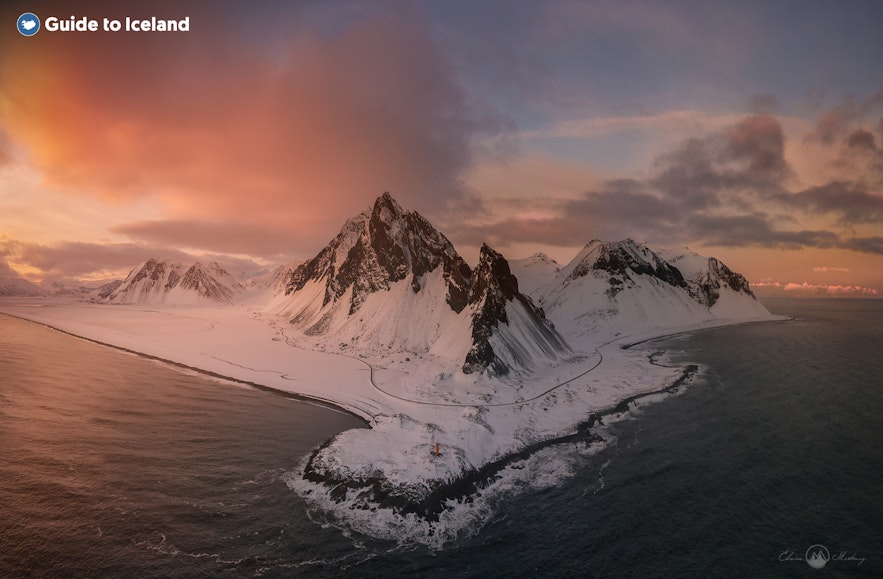
While September is mostly considered relatively balmy (for Iceland, at least!), October is technically the beginning of Iceland's winter, so it can get very cold. Low-pressure systems station themselves staunchly over the country, causing high winds and heavy rains. Those elements, in tandem with cold fronts, make October a tumultuous month.
The sharp autumn winds funnel between mountain passes and buildings, lowering the average temperature and making it impossible to hold onto an umbrella. These strong, focused winds can easily push you over, so you'll want to take extra care while you're out and about.
On average, the wind at the beginning of October is 11.5 miles per hour (around 5 meters per second); this picks up slightly to 12.5 miles per hour (5.5 meters per second) by the latter half of the month.
The average precipitation in Iceland in October is about 3 inches (77 millimeters). This is slightly higher than the annual monthly average of 2.8 inches (73 millimeters)—in fact, October is the wettest month of the year in Iceland, so be sure to pack your waterproofs.
October doesn't usually see heavy snow in Iceland (particularly in Reykjavik and the south of the country), but it is possible. If you're planning to visit the north of the country or the Highlands, you might encounter snow and ice.
Hours of Daylight in Iceland in October
September and October both tend to have roughly 12 hours of sunlight per day. On October 1, the sun rises at 7:37 a.m. and sets at 6:56 p.m. By the end of the month, daylight hours have reduced; on October 31, the sun rises at 9:08 a.m. and sets at 5:13 p.m.
- Read more: Iceland Daylight Hours by Month
What to Pack for Iceland in October
Because of the weather variability in Iceland, it's a good idea to pack a variety of clothes—something to keep you nice and warm on cold days, but also layers that you can remove if it's a little warmer.
If you're visiting Iceland at any time of year, it's essential to bring warm clothes. Temperatures can drop quickly and without warning. If you're out exploring ice caves or hiking on glaciers, you can bet you'll be freezing if you aren't dressed properly!
So bring your winter wear, including a warm (ideally waterproof) coat, waterproof pants, and thermal underlayers. You should also bring warm sweaters that you can wear during the day and if you're going out for a meal somewhere nice. Choose natural fibers like merino wool, as these are lighter to carry but will also keep you lovely and warm.
You'll also want to bring a warm winter hat, a good pair of gloves, and a scarf for extra warmth. But while you're packing for wintry weather, make sure you don't forget your swimwear, a towel, and a pair of sunglasses!
In addition to lots of layers, you'll obviously need to bring regular clothes with you too: jeans or pants, t-shirts, and long-sleeved tops are all a good idea. Bring comfortable shoes that you can wear when sightseeing, too.
Plus, don't forget to bring sturdy hiking shoes for any outdoor adventures you're planning!
Driving in Iceland in October
Because of the drop in temperature and the higher probability of heavy rain, strong winds, dense fog, snowfall, and ice, many travelers to Iceland in October choose to forgo renting a car.
Accidents on Iceland’s roads often occur because visitors aren't used to driving in such hazardous conditions, especially on the gravel tracks and unlit roads that lead into the Icelandic countryside.
If you do choose to rent a car in Iceland, we highly recommend that you choose one with four-wheel drive. It's also essential to check the weather office website and road conditions before and during any journey, so you know the conditions you might be facing and can avoid roads that are impassable.
It's also worth remembering that floods and avalanches aren't uncommon in October. Never, ever drive on a road that's cordoned off. This is absolutely essential for your safety.
Driving Iceland's Ring Road in October
In October, almost all of Iceland should be accessible unless unseasonable weather, flooding, or an avalanche blocks a section of the Ring Road. This openness means that you should be free to reach the main attractions with relative ease, either by taking tours or driving yourself.
The Ring Road is usually cleared of any snow and ice fairly regularly, so it should be possible (and fairly safe) to drive this circular route of the country.
However, it's a good idea to rent a 4X4 car, even if your planned route doesn't veer from the main road. Conditions can change quickly, especially in North Iceland. Just because you're on the main road doesn't mean you're guaranteed an easy journey!
If you're nervous about driving in poor conditions, it's a good idea to stick to the southern parts of the country instead of heading north. Here, you're less likely to encounter any difficult patches.
What To Do in Iceland in October
October is a great time to visit Iceland because it's usually possible to enjoy both summer and winter tours. Many summer tours run until snow blocks the roads—in most parts of Iceland, that happens in November or December. Meanwhile, many winter tours only require a little darkness to operate, so they tend to kick off the season in September.
Since October is a perfect crossover between winter and summer, several tour options are available to tourists and travelers. It's the best of both worlds!
The Northern Lights in Iceland in October
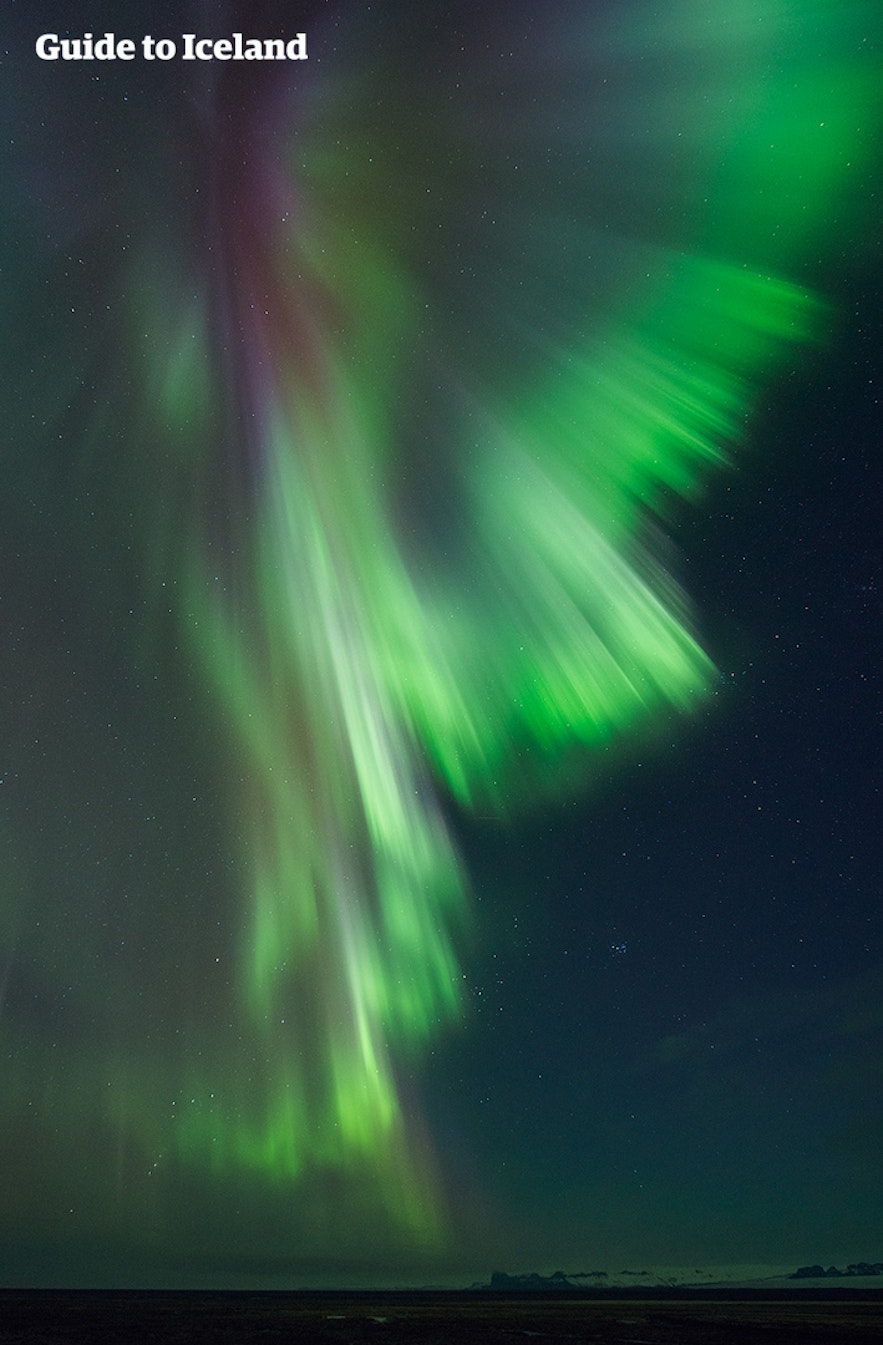
The aurora borealis can only be seen when it's very dark and the sky is clear enough. They're almost impossible to catch from May to September because of the midnight sun.
But by the time October arrives, the chances of seeing the northern lights increase.
There are many ways to capture this awe-inspiring phenomenon, but the best methods involve leaving the light pollution of the city center. Any ambient light works against the northern lights' intensity, so even if you can already see them well from your window in Reykjavik, you're bound to get a better view from the countryside.
There are a few exceptions to this; the area around the Grotta Lighthouse in the capital is usually dark enough to see the lights, and city parks like Klambratun and Laugardalur offer better views than you'd get from your hotel or property's backyard.
That said, if you stay in one place, a few stray clouds could block your view. By taking a northern lights tour out of Reykjavik, your expert guides will be able to find areas with the clearest skies because they know the lay of the land and the changeable nature of the lights.
Northern Lights tours from Reykjavik can be conducted on a bus from Reykjavik or with a super jeep, depending on where you'd like to go. Bus tours tend to be more affordable, but super jeeps can take you to less accessible places—over rivers and down dusty trails—meaning there'll be less light pollution and a greater chance of a good view.
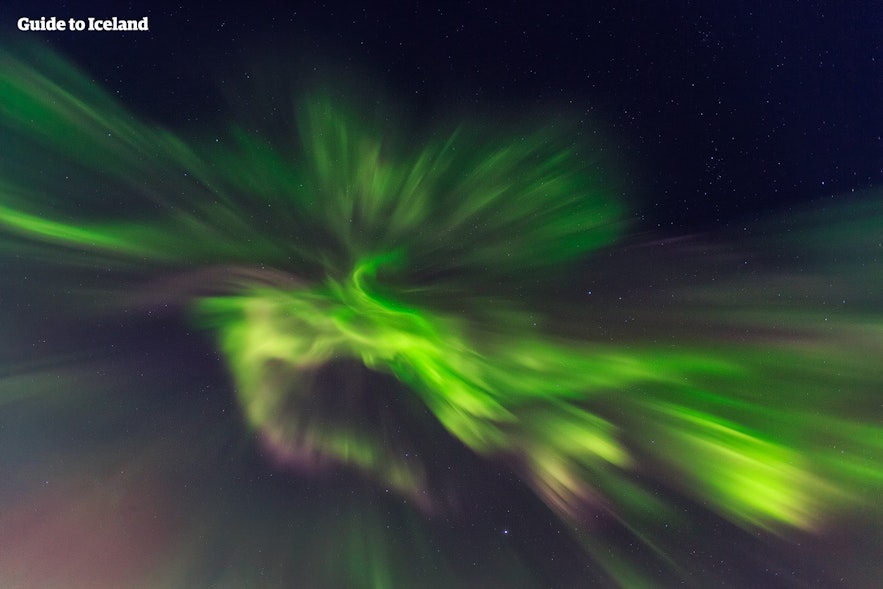
Of course, if you don't want to take an organized tour, it's also possible to go chasing the northern lights at your own convenience in a rental car.
If you decide to do this, you'll increase your chances of success by consulting the cloud forecast and the aurora forecast of the Icelandic weather office. You'll want to head out to areas with little to no cloud cover when the aurora forecast is ranked at three or above.
Be mindful that the cloud forecast displays all three layers of clouds, and all three will need to be clear to see the lights.
There's no guarantee of seeing the northern lights at any time of year in Iceland, but it is certainly possible during October. Plan accordingly and cross your fingers for a clear night sky!
Whale Watching in Iceland in October
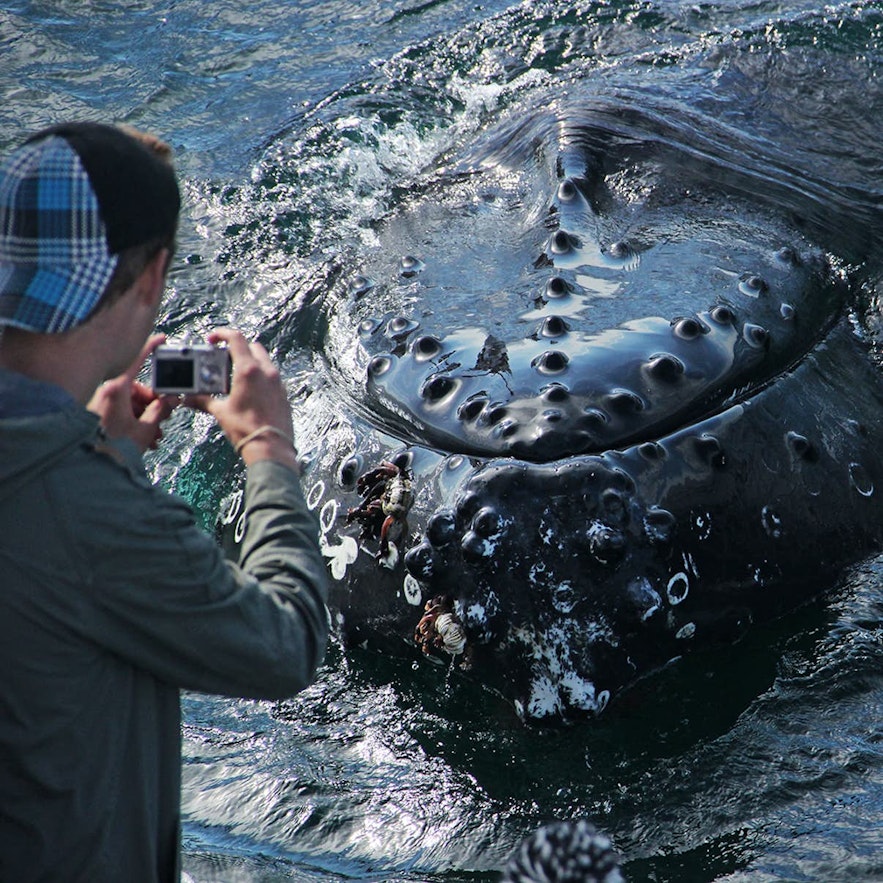
October comes just after the end of the summer, meaning that most migratory animals are now on their way out of the country; this includes the humpback whales that feed in Iceland’s waters and the puffins that nest on its cliffs.
Even so, over 20 species of cetacean (whales, dolphins, and porpoises) live in Iceland's waters, and you can usually see all of them well into October. With a little luck, you could see orcas, blue whales, and beaked whales. Although the great whales are fewer in number, there will always be a few stragglers.

Whale-watching tours depart from all around the country. You can go whale watching from Reykjavik and head into Faxafloi Bay, where minke whales, humpbacks, and dolphins are commonly spotted.
From Akureyri, in North Iceland, tours head into the Eyjafjordur fjord. Here, the most common species seen are humpbacks, but belugas and even narwhals are spotted occasionally. You can choose from an Akureyri whale-watching tour in a standard boat or pick a more high-speed whale-watching tour in a RIB Boat.
Another way to get to know the gentle giants of the ocean better is at the Whales of Iceland exhibition, with life-sized models of all 23 species of cetacean (whales, dolphins, and porpoises) found in this country’s waters. Visiting the Whales of Iceland exhibition is a great way to see the scope of these amazing creatures up close.
- Read more: The Best Guide to Whale Watching in Iceland
Glacier Tours in Iceland in October
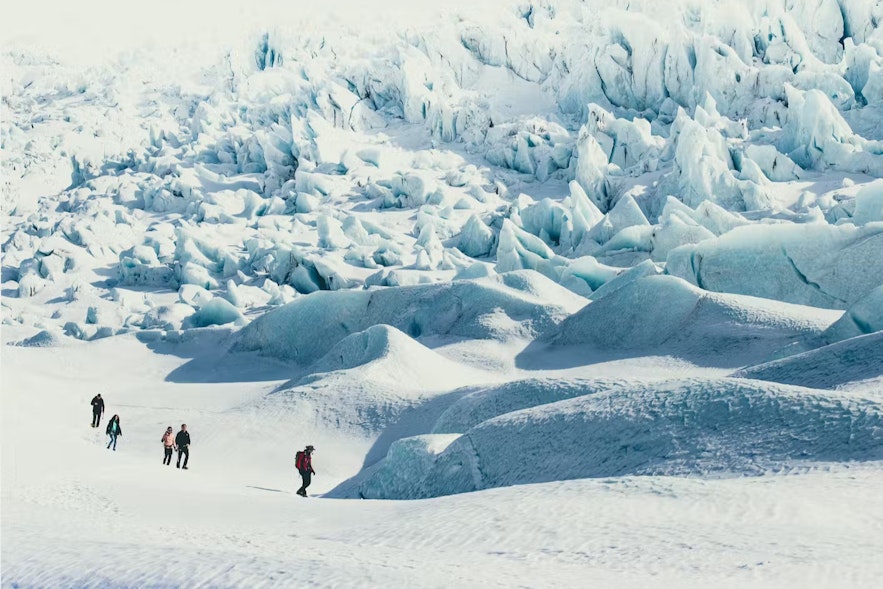 Photo from the Top-rated Glacier Hiking Tour in Skaftafell
Photo from the Top-rated Glacier Hiking Tour in Skaftafell
Iceland's glaciers are one of its most precious assets—and one of its most popular attractions. They cover 10% of the country's surface, and various tours run both atop and within them in October.
Glacier hiking is an incredible thing to do during your trip to Iceland. Seeing the world from the top of an ice cap will be an unforgettable experience, with breathtaking views of the surrounding area.
Take a glacier hiking tour with a qualified guide for optimal safety. They'll give you the gear you need to keep safe but will also teach you about the country's geological and volcanic history. It's fun but also fascinating!
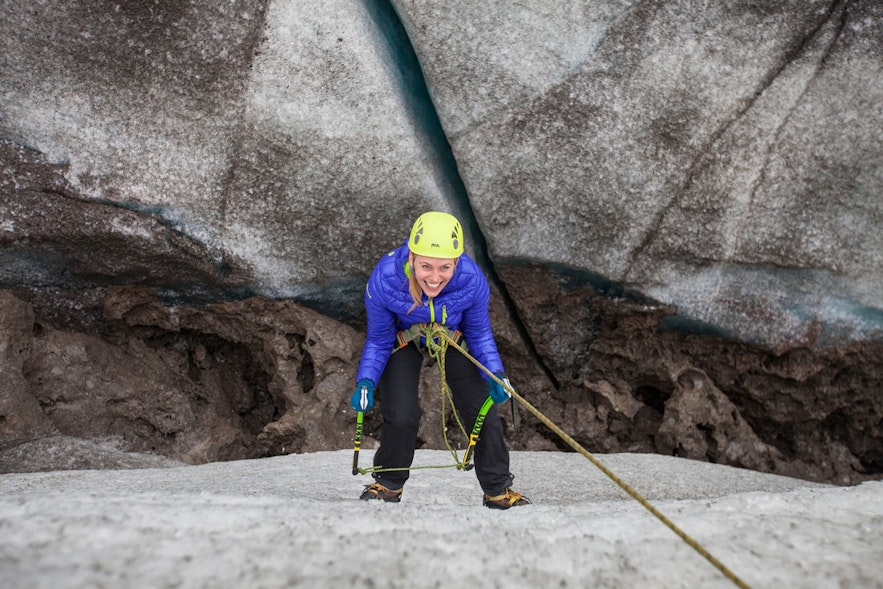 Photo from Incredible 4-Hour Ice Climbing & Glacier Hiking Tour on Vatnajokull with Transfer from Skaftafell
Photo from Incredible 4-Hour Ice Climbing & Glacier Hiking Tour on Vatnajokull with Transfer from Skaftafell
Solheimajokull glacier is one of the country's most popular glaciers for hiking. You can experience this 12-hour South Coast tour with Glacier Hiking, which starts from Reykjavik and includes some of the South Coast's famous features, such as the famous and majestic Skogafoss and Seljalandsfoss waterfalls.
Those in Southeast Iceland can ascend the largest glacier in Europe, Vatnajokull, for an exciting trek. It's also possible to visit Svinafellsjokull glacier, which is set within a hiker’s paradise, the Skaftafell Nature Reserve.
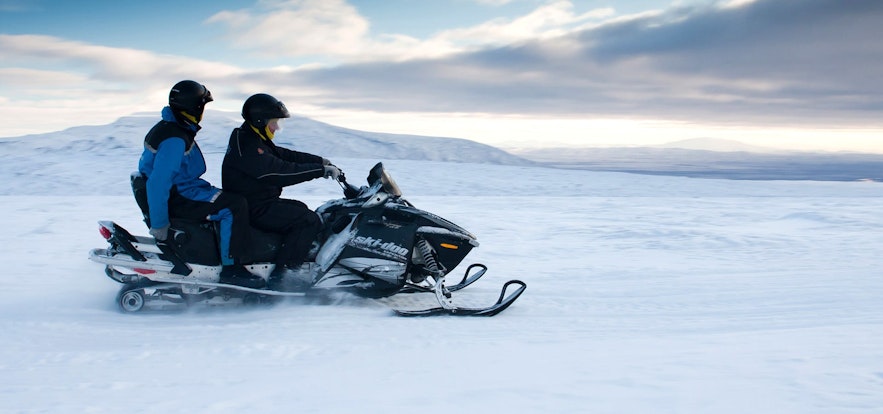
If you're not much of a hiker, you can take an exhilarating snowmobile ride over glaciers instead. You'll need a valid driver’s license to operate a snowmobile, but guests as young as six can join as a passenger. This experience mixes sightseeing with adrenaline and can be experienced on many of Iceland's glaciers.
Taking a snowmobile tour on Vatnajokull glacier is great for thrill-seekers in Southeast Iceland, but those based in Reykjavik might find it easier to take a snowmobile excursion to Langjokull glacier with transfer from Reykjavik, as it's much closer to the city.
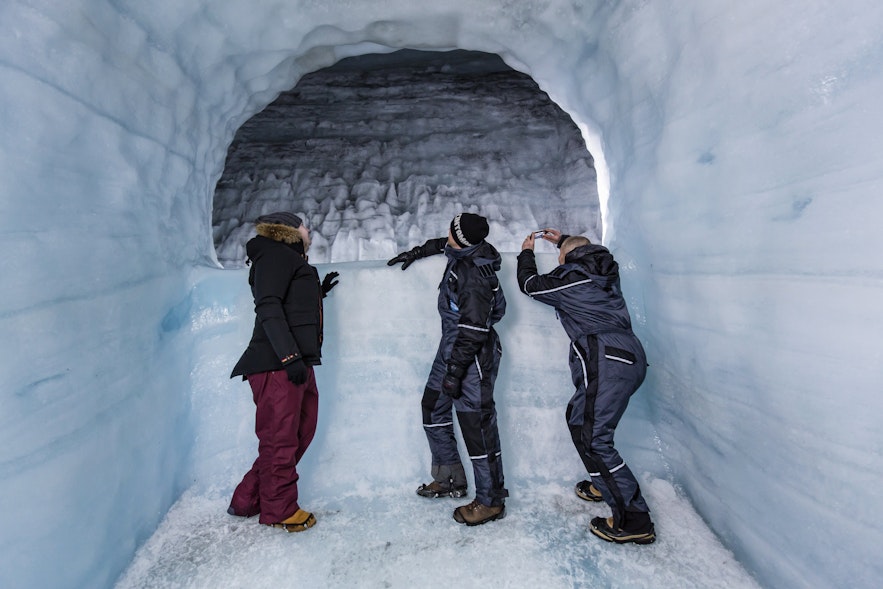
If you're planning to tour Langjokull glacier, it might also be worth combining the snowmobile tour with a visit to the glacier’s ice tunnels, which were specifically carved out to facilitate tours. You can also visit the Langjokull glacier and experience the ice caves with a monster truck.
The natural ice caves in Vatnajokull glacier are usually only available from November until March, but some operators start running tours from the middle of October. It all depends on the weather conditions each year.
- Read more about Snowmobiling in Iceland
- See also: The Ultimate Guide to Ice Caves in Iceland
Horse Riding in Iceland in October
Riding an Icelandic horse is a quintessential Icelandic experience. These beautiful purebred creatures are the pride and joy of the nation. They've been separated from their mainland companions for a millennium, and as a result, they've developed many unique traits.
Fans of equestrian sports will be able to tell you that the Icelandic horse has a unique gait called a ‘tölt.’ It's said that when riding a horse in tolt, you can drink a glass of water without spilling a drop. The horses are also known for being intelligent, curious, and very friendly.
Horse riding is very popular among both Icelanders and visitors, and there are several ways to enjoy this activity in October. You can take a horseback riding tour from Reykjavik over the dramatic lava fields while you imagine how Vikings rode across the land during the Settlement Era. You could also enjoy a horse ride tour of Gufudalur Valley, where you'll find hot springs and a geothermal river.
There are similar tours around the country. In the south, for example, you can take this horseback riding excursion from Hella.
Snorkeling and Diving in Iceland in October

It might be surprising to visitors who are a bit nervous about the cold, but snorkeling and diving are popular activities all year round in Iceland.
The best place to try it for yourself is the Silfra Fissure. This trench is between the North American and Eurasian tectonic plates in Thingvellir National Park. The fissure has filled with spring water that traveled through the porous lava rock. Its waters are crystal clear, with visibility exceeding 325 feet (about 100 meters). No matter what time of year you go, the water temperature should be around 35 F (around 2 C).
- See also: Scuba Diving and Snorkeling in Iceland
 Photo from Incredible 5.5 Hour Snorkeling in Silfra Tour at Thingvellir with Transfer from Reykjavik
Photo from Incredible 5.5 Hour Snorkeling in Silfra Tour at Thingvellir with Transfer from Reykjavik
Though the temperature may sound daunting, the equipment provided is very protective. For dives and most snorkeling trips, you wear drysuits that keep the water off and insulating suits as an additional layer of warmth. The braver can wear wetsuits instead on snorkeling tours—these allow water in, so it's not for the faint-hearted!
Taking a drysuit snorkeling or diving tour in October is a lot more comfortable than in the depths of winter. The park’s temperature should be above freezing, so you probably won’t have to deal with any icy equipment when you’re getting undressed, and you should warm up pretty quickly once you're out of the water.
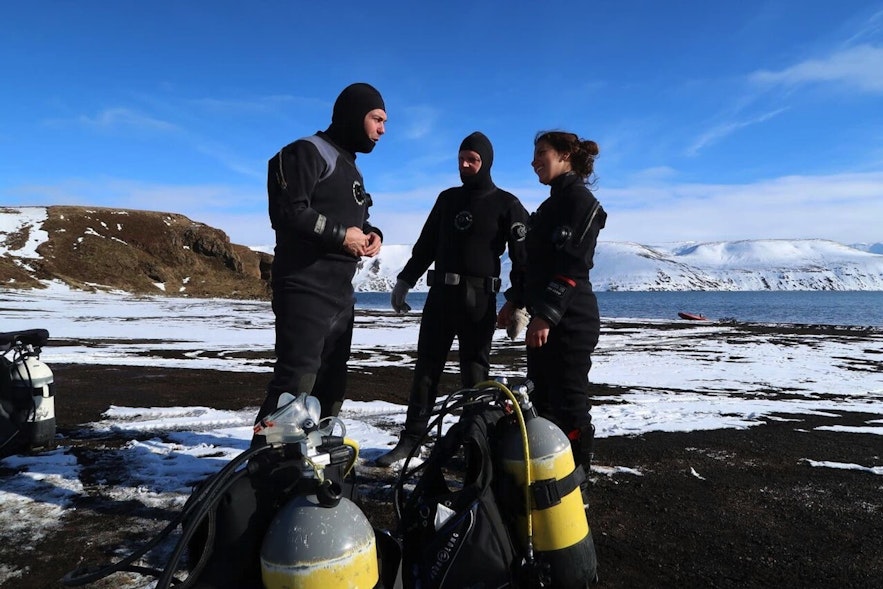
Photo from PADI Drysuit Diver Course with 1 Pool Session, 2 Open Water Dives & Transfer from Reykjavik
While snorkeling and diving tours are as safe as possible, conducted with group size limits under the supervision of professionals, you can only partake if you meet the following requirements:
- Minimum age: 14
- People above 60 need a medical waiver.
- Minimum height: 150 cm
- Maximum height: 200 cm
- Minimum weight: 45 kg
- Maximum weight: 120 kg
- Experience needed: must be a swimmer and physically fit.
- Minimum age: 14
- People above 65 need a medical waiver.
- Minimum height: 145 cm
- Maximum height: 200 cm
- Minimum weight: 45 kg
- Maximum weight: 120 kg
- Experience needed: must be a swimmer and physically fit.
- Minimum age: 18
- People above 60 need confirmation of good health from a doctor.
- Minimum height: 150 cm
- Minimum weight: 45 kg
- Experience needed: Open Water certification and dry suit certification. If not certified, at least 10 logged and confirmed drysuit dives or a confirmation letter of necessary experience signed by an instructor.
The Golden Circle
The Golden Circle is Iceland's most popular tourist route, and it should be high on your list of things to do during your trip to Iceland in October.
The 186-mile (300-kilometer) round-trip route consists of three beautiful attractions:
Gullfoss waterfall is one of the most famous falls in Iceland. Its waters tumble in two tiers down more than 100 feet (about 30 meters).
Around 6 miles away (10 kilometers) is the Geysir geothermal area. This spectacular zone is full of hot springs and, as its name suggests, geysers. Don't miss your chance to see some of Iceland's most famous geysers erupt—you shouldn't have to wait too long, as Strokkur erupts every five to ten minutes!
Thingvellir National Park is one of three national parks in Iceland. This UNESCO World Heritage Site is a beautiful place to explore and is full of incredible sights: waterfalls, mountains, lava fields, gorges… It's truly breathtaking. Additionally, it also has major historical significance as it was the founding site of Iceland's national assembly Althingi, in the year 930. That makes Althingi the oldest active parliament in the world!
It's possible to see all three of these spectacular sights in one day, whether by driving the Golden Circle in a rental car or as part of an organized Golden Circle tour. Many tourists visit the route from Reykjavik, as most of the tours to the attractions depart from and return to the capital.
However, it's also possible to spend the night near the Golden Circle if you'd prefer to take your time and beat the crowds. You can find varied options for accommodation in the Golden Circle as you plan your trip.
Hot Springs and Swimming Pools
Another great thing to do in Iceland at any time of year (including October) is to enjoy the country's numerous lagoons, hot springs, hot pots, and swimming pools. Soaking in a geothermal pool is a wonderful way to unwind after a busy few days of sightseeing.
Icelanders love relaxing and chatting in hot springs and swimming pools. There are hundreds of swimming pools all over the country, with 17 swimming pools in Reykjavik alone. Swimming and relaxing in public hot tubs is incredibly popular, and tourists should definitely take part during their trip to Iceland. Most are geothermally heated, so it's a lovely way to warm up.
If you're more into chilling out than swimming, why not visit a hot spring instead of a pool? There are natural and man-made springs in all parts of Iceland. Settling in for a relaxing soak is a classic Icelandic pastime and an absolute must-do while you're visiting.
If you're keen on the idea of visiting several hot springs and pools, you can take a hot spring tour, or simply make sure to visit the local spring wherever you're staying.
Visiting the Blue Lagoon in October
By far, Iceland's most famous geothermal area is the Blue Lagoon. You'll find it very close to Keflavik Airport, so many visitors to Iceland make it the first or last stop on their trip. It's also easy to reach the lagoon from Reykjavik.
The Blue Lagoon spa is open all year round, so it's definitely possible to visit in October. In fact, it might be a great time to visit because October usually sees fewer tourists than other months, so you might have a chance of getting in without a booking!
However, this is one of the most popular tourist attractions in the whole country, so it's a good idea to book your entry to the spa well in advance.
Its striking blue waters are thought to have healing properties, so a relaxing soak here will definitely do you some good! Reserve your place at the end of your trip so you can unwind after a busy week of sightseeing. Heaven!
- See also: Blue Lagoon Travel Guide
- Check out the Blue Lagoon vs. Sky Lagoon: Which One Should You Visit?
Day Hikes and Super Jeeps
Hiking and taking super jeeps into the Highlands of Iceland or up mountaintops are usually regarded as summer experiences. But October just about counts as the very end of the warmer months, so you'll be able to enjoy these brilliant outdoor activities during your stay.
Most multi-day hikes aren't available from the end of September onward, as it's simply too cold to spend the night camping, but there are many single-day trips into the country’s remarkable interior.
For example, the forested ‘Valley of Thor,’ Thorsmork, can be visited and hiked on a day tour in October, allowing you to see this mesmerizing land in its autumnal colors.
Landmannalaugar, an iconic Highland region of rhyolite mountains and natural hot springs, can also be accessed and explored on tours, like this super jeep tour that also introduces you to the notorious Mount Hekla volcano. Landmannalaugar and Thorsmork mark either end of the famous Laugavegur trail, the most popular multi-day hiking trek in summer. You might not be able to do the whole trek, but you can still visit these gorgeous locations.
East Iceland becomes more difficult to traverse in October, but it's not entirely out of the question. You can still visit the charming villages along the deep fjords of the region and take a dip in the serene Vok baths, which is both a great place to relax in geothermal waters and an engineering wonder as the warm pool floats on top of a lake.
- Learn more: The Best Places to Visit in East Iceland
Jokulsarlon Glacier Lagoon Boat Trips
Boat tours of the Jokulsarlon glacier lagoon are most popular in summer but are still available until the end of October.
Put simply, Jokulsarlon is an enormous lake. It's the deepest in the country and is scattered with icebergs that have broken off of a distant glacier tongue. They cruise slowly across the lagoon, churning and rotating toward the ocean. It's quite a sight to see.
Wildlife lovers will love a trip to the lagoon, as many seals call this area home. It's actually one of the most reliable places to spot them.
To tour the lagoon, you can hop aboard an amphibious vessel that will take you from land into the waters, bringing you to the very center of the Jokulsarlon lagoon, where surreal ice sculptures will surround you.
Alternatively, you can take a zodiac tour in an inflatable boat with an outboard motor for a slightly more expensive but more intimate experience.
The glacier lagoon is particularly beautiful in October, as the changing light refracts off the ice.
Exploring Snaefellsnes
The Snaefellsnes peninsula is a great place to visit in October, often referred to as "Iceland in miniature" due to its diverse landscapes, all concentrated in a single area. If you had to visit one region in Iceland to get most of the iconic sightseeing done, Snaefellsnes would be the place to go. If you want to take your time exploring the peninsula, make sure to book accommodations in Snaefellsnes ahead of time.
At the heart of the peninsula stands the Snaefellsjokull glacier, immortalized in Jules Verne's novel "Journey to the Center of the Earth." The surrounding Snaefellsjokull National Park is a haven for outdoor enthusiasts, offering hiking, birdwatching, and snow activities.
The coastline of Snaefellsnes boasts dramatic cliffs, home to diverse bird species. The Londrangar basalt cliffs and the rock formation of Arnarstapi are two of the most striking features on the coast, sculpted over time by the relentless force of the ocean and volcanic activity. The peninsula is also littered with beautiful black sand beaches, such as Ytri-Tunga, which remains the best place in Iceland to reliably spot seals.
Outside of the peninsula's natural beauty, there is also a rich tapestry of history and folklore entwined with its landscapes. The fishing towns of Stykkisholmur and Grundarfjordur provide a glimpse into Icelandic culture, traditions, and everyday life. Grundarfjordur is famously known for the Kirkjufell mountain, often claimed as the most photographed mountain in Iceland.
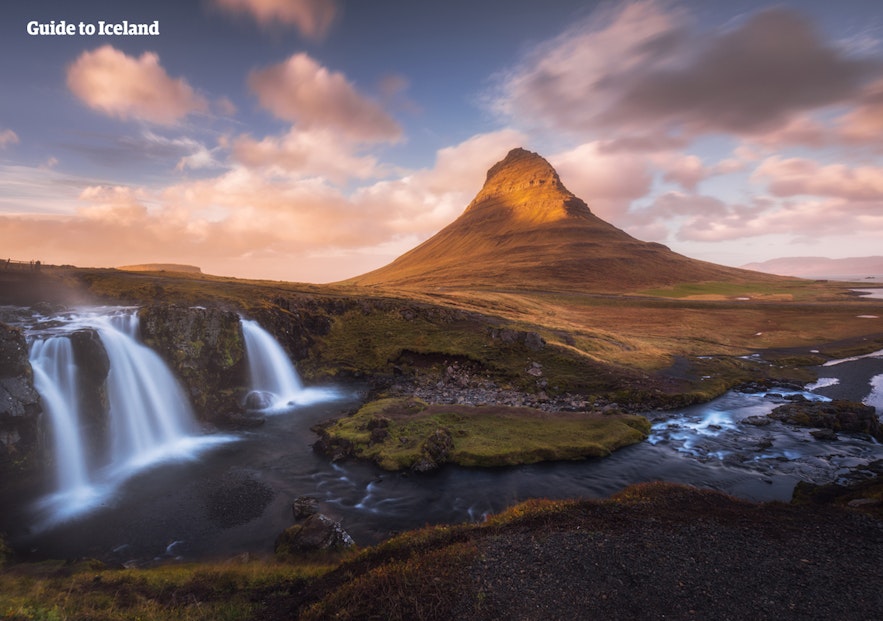 Snaefellsnes is also home to intriguing lava caves such as Sönghellir, which is famous for the musical qualities of its echoes, and Vatnshellir is favored for its easy access and vivid coloration.
Snaefellsnes is also home to intriguing lava caves such as Sönghellir, which is famous for the musical qualities of its echoes, and Vatnshellir is favored for its easy access and vivid coloration.
Visiting Snaefellsnes in October is a great time to explore this fascinating microcosm of Iceland and all its natural wonders and history. You could enjoy an unforgettable 50-minute tour of Vatnshellir Cave or a magical 2-hour seafood boat cruise in Breidafjordur bay from Stykkisholmur.
Sightseeing in Reykjavik
As the vibrant capital of Iceland, Reykjavik is bustling with tourists, visitors, and locals all year, October included.
With plenty of sightseeing attractions, including several art galleries and great museums, plus excellent nightlife, there really are so many things to do in Reykjavik. It's worth spending at least a few days in the city during your time in Iceland so you can really make the most of what's on offer.
It's a friendly and welcoming city, and the center is small enough that it's easy to get around on foot. Roam the main shopping streets of Laugavegur, Bankastraeti, and Austurstraeti, or go bar hopping in the city's numerous pubs, bars, and venues.
Pay a visit to Harpa Concert Hall and admire its striking architectural design, or go for a stroll and see the famous Sun Voyager statue. Plus, don't miss a trip to the iconic Hallgrimskirkja church, the largest in all of Iceland.
- See more with the Reykjavik Nightlife Guide: The Best Bars and Clubs in Iceland

Other Sights and Destinations
If driving conditions allow, reaching North Iceland in October should be possible. Wonderful attractions such as the Hvitserkur rock formation and the Vatnsnes peninsula are usually easy to reach, and towns such as Reykjahlid and Husavik still have most of their services open to visitors this time of year.
The Lake Myvatn area is spectacular and diverse, and if it's covered in snow, it will delight Game of Thrones fans, as many scenes ‘north of the Wall’ were shot here.
- Plan your trip with the Ultimate Guide to Lake Myvatn
You might also be able to travel to the Highlands for one last look in October. Two roads that join the north and the south through the interior—the Kjolur Highland Road and Sprengisandur—should both still be open, and the panoramas alongside each are spectacular.
Expect glacier and volcano views, vast expanses of lava and black sands, hot springs, and enormous mountain ranges. It's beautiful.
Events and Festivals in Iceland in October
Iceland loves its festivals. People flock from around the world for events like Iceland Airwaves and Reykjavik International Film Festival, and these events seem to get bigger and bigger with every passing year.
October is somewhat quieter than other months, but it's not without its fair share of events.
- See more: Top 20 Festivals in Iceland
Halloween in Iceland
Celebrating Halloween is pretty new to Iceland. If you're visiting Reykjavik in late October, you'll be able to spot club-goers in Halloween costumes throughout the city. Get dressed up and join them for a drink!
Halloween-themed events are common throughout October, so be on the lookout for fun things to do while staying in Iceland during the spookiest time of year.
The Reykjavik International Film Festival
The Reykjavik International Film Festival, or RIFF, is the largest in the country. It kicks off each year at the end of September and runs into the first week of October.
Films of all genres from over 40 countries are screened during the festival, emphasizing up-and-coming independent filmmakers.
Concerts, meetings, and exhibitions crop up all across the city during the RIFF, allowing industry professionals to build their knowledge and network.
So, if you're visiting Reykjavik in early October, why not catch a movie?
- See also: The Story of Icelandic Cinema
Imagine Peace Tower Lighting
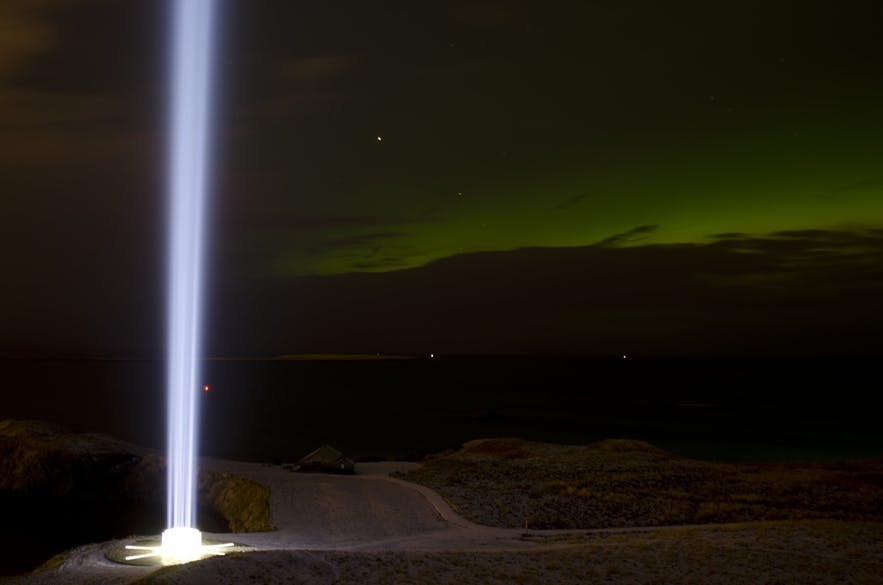
The Imagine Peace Tower is a memorial to John Lennon, created by Yoko Ono. With ‘Imagine Peace’ written on the base in 24 languages, it encapsulates the couple’s message of unity, harmony, healing, and joy. The monument is located on Videy, a small island off the coast of Reykjavik, and can be reached via ferry from Reykjavik Harbor.
When lit, it shoots a 4000-meter-high pillar of light up into the sky, and October is a perfect time to see it. The tower is lit each year on October 9, John Lennon's birthday, and remains switched on until December 9, the anniversary of his death. During this time, it's visible from all over the capital area.
- See Also: Amazing Videos from Iceland
Suggested Itineraries for Iceland in October
Since October is a bit of a crossover month between winter and summer, there's plenty to do. Here we have some proposed itineraries to maximize your chances of seeing everything you want to see during your October trip to Iceland.
If you're planning to rent a car and drive yourself around the country, there are several excellent self-drive tours. This express seven-day self-drive tour of the Ring Road and this 11-day Ring Road tour with Snaefellsnes peninsula offer two solid options for exploring the country at your own pace. This 12-day northern lights winter tour might be better suited to tourists arriving in late October when the weather might have worsened.
If you're keen on seeing the aurora borealis, you might enjoy a five-day northern lights vacation package, with ice caving & the Blue Lagoon, or this ten-day northern lights self-drive tour of the complete Ring Road.
If you don’t want to drive yourself around but want to see the entire Ring Road, you can book a seven-day guided trip around Iceland, which takes you to all the major attractions around the country. If you don’t have time for such a long adventure, there are four-day and five-day guided packages that can show you the south and west of the country.
Have you been to Iceland in October? How was your trip? We'd love to hear about it, so let us know in the comment section below.
Other interesting articles
The Ultimate Guide to Iceland in August
Find out everything you need to know about visiting Iceland in August in this complete guide. Learn about what wildlife you can see, what the weather is like in Iceland in August, what sites are wor...Read moreIceland in November: Everything You Need To Know
Discover everything you need to know about visiting Iceland in November. Whether you're interested in learning about the weather in Iceland in November or how to increase your chances of seeing th...Read more
Live Feed from the Volcanic Eruption by Grindavik, Iceland
Volcanic eruptions near Grindavik have begun yet again. Keep on reading for an incredible, live-streamed look at 2024's eruption in the Reykjanes peninsula. Another eruption has begun on the Reykjane...Read more

Download Iceland’s biggest travel marketplace to your phone to manage your entire trip in one place
Scan this QR code with your phone camera and press the link that appears to add Iceland’s biggest travel marketplace into your pocket. Enter your phone number or email address to receive an SMS or email with the download link.

